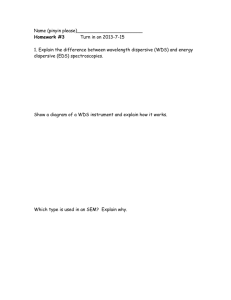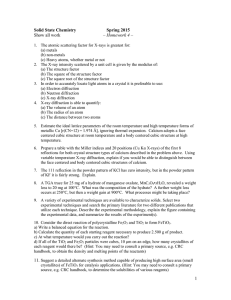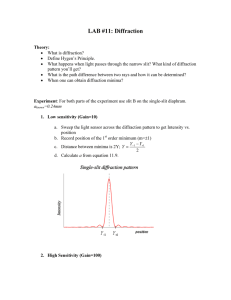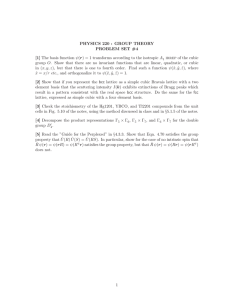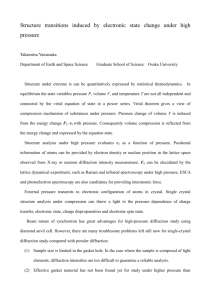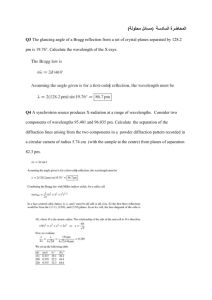12.108 Lab 7: Diffraction Part I: X-Ray Diffraction
advertisement
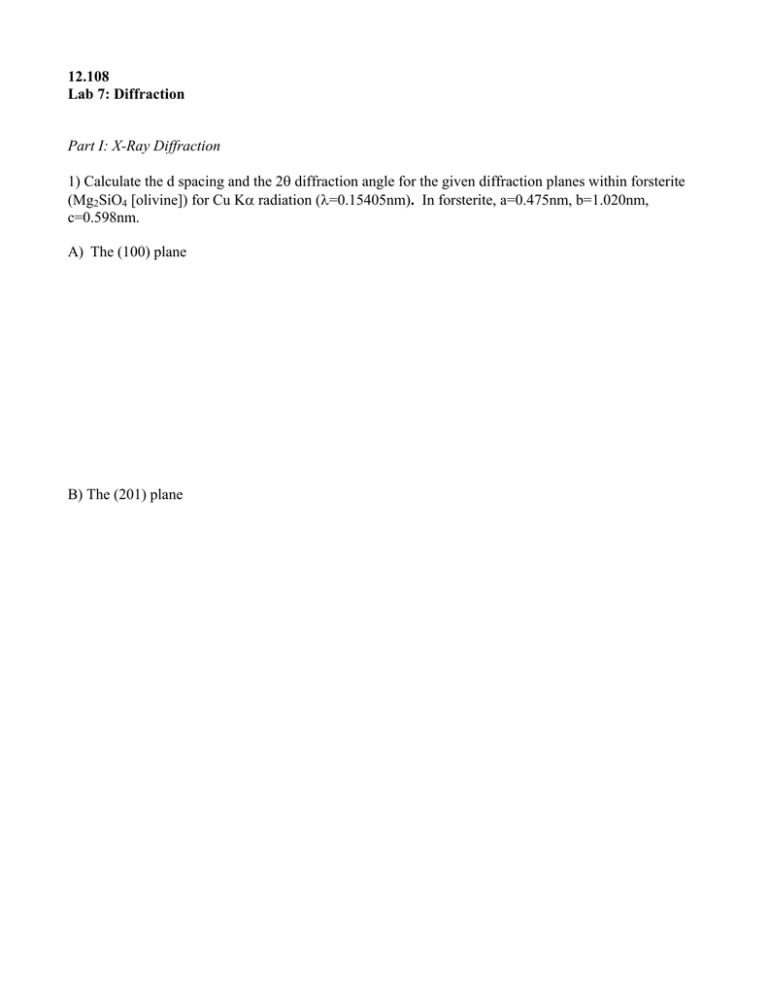
12.108 Lab 7: Diffraction Part I: X-Ray Diffraction 1) Calculate the d spacing and the 2θ diffraction angle for the given diffraction planes within forsterite (Mg2SiO4 [olivine]) for Cu Kα radiation (λ=0.15405nm). In forsterite, a=0.475nm, b=1.020nm, c=0.598nm. A) The (100) plane B) The (201) plane 2) Examine the attached X-Ray diffraction patterns. These were calculated for MgSiO3 (perovskite) at a pressure of 100 GPa using an X-Ray wavelength (λ) of 0.04246nm. Two possible structures were examined: orthorhombic and cubic (isometric). For both structures, the three most prominent peaks occur at 2θ’s of 7.68, 10.86, and 15.38 degrees. For each of these three peaks, calculate the d spacing of the plane responsible for the diffraction for both the orthorhombic and cubic structures. Are the d spacings the same or different for the two structures? What might lead to the different appearances of the diffraction patterns for orthorhombic and cubic perovskite. A) Orthorhombic Perovskite: a=0.4379nm, b=0.4595nm, c=0.6359nm Orthorombic Pervoskite 600 Intensit 500 400 Series1 300 200 100 0 0 5 10 15 20 2 theta B) Cubic Perovskite: a=0.3179nm Cubic Perovskite 250 Intensit 200 150 Series1 100 50 0 0 5 10 2 theta 15 20 2) (con’t) Part II: Reciprocal Space 3) Examine the attached monoclinic crystal lattice, as observed looking down the b axis. Based on this lattice, construct the reciprocal lattice, including a*, c*. Highlight the inverse spacings 1 1 and , d100 d 001 and label the (hkl) indices of the points in reciprocal space. Assume each square comprising the grid has sides of 0.5nm 4) Examine the diffraction pattern obtained from a cubic crystal, with the electron beam incident along the [110] direction, with a=0.4nm. Determine if this pattern is the result of a primitive cell, a face centered cell, or a body centered cell. Explain why you arrived at your conclusion.
